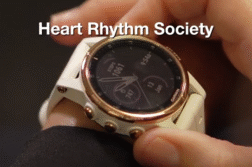CLEVELAND, Ohio (Ivanhoe Newswire) – One in five American children is considered obese, putting them at risk for some very adult-like diseases. Can what you eat as a kid affect your heart when you grow up? Childhood Obesity
Worldwide health experts call obesity an epidemic. Obese kids are much more likely to have high blood pressure and high cholesterol, which puts them at risk for cardiovascular disease. A new study suggests eating patterns that could help kids get on a healthier track.
If you think that what kids put in their bodies now won’t matter years from now, think again.
“It’s not generally known that cardiovascular disease, things like heart attacks and strokes really have their beginnings in very early childhood,” Professor Emeritus, Dr. Michael Macknin, mentions.
Researchers at the Cleveland Clinic enrolled 96 pairs of parents and their kids in a 52-week study to see if one of three healthy eating plans could lower their cardiovascular risk.
In one case, the kids and one parent were assigned to eat foods from a plant-based diet, which inclided fruit, vegetables, and healthy proteins, like legumes, beans, chickpeas, and lentils. The parent and child could have also chosen the American Heart Association diet, which included fruits and vegetables, dairy and lean meats, or the Mediterranean diet, which is similar to the Heart Association diet, but it emphasizes fish and nuts, and olive oil.
The researchers used fasting blood tests to measure the biomarkers of cardiovascular risk and found all three eating plans were effective.
Dr. Macknin says, “Things like blood pressure, both systolic and diastolic, went down. The total cholesterol decreased. The LDL cholesterol, which is the bad cholesterol, also went down.”
Researchers say that study shows that even small changes to eating habits make a difference.
“Pick a diet that you think you can stick with and just do the best you can. You don’t have to be perfect to make wonderful changes,” Dr, Macknin adds.
Dr. Macknin says most of the study participants lost significant weight at the four-week mark, but the rate of weight loss was hard to maintain over the course of the full year. Despite that, the cardiovascular benefits were still evident.
Contributors to this news report include: Cyndy McGrath, Producer; Roque Correa, Editor.
To receive a free weekly e-mail on medical breakthroughs from Ivanhoe, sign up at: http://www.ivanhoe.com/ftk
Source:
MEDICAL BREAKTHROUGHS
RESEARCH SUMMARY
TOPIC: CHILDHOOD OBESITY INCREASES FUTURE CARDIOVASCULAR RISKS
REPORT: MB #5046
BACKGROUND: According to the World Health Organization obesity has tripled from 1975 to 2021. Thirty-nine percent of adults over the age of 18 were overweight and 13% were considered obese. In 2016, 39 million children under the age of 5 were obese and 340 million kids 5 to 19 were overweight or obese. For children that become obese there is an increased risk of impaired glucose tolerance, insulin resistance, breathing problems, joint and muscular discomfort, and fatty liver disease. They are also more likely to have high blood pressure, high cholesterol, and cardiovascular disease. Children with obesity as a child are more like to grow up and be obese as an adult and this can lead to life-long mental health and physical problems. Almost 60 percent had at least one risk factor for cardiovascular disease and 25 percent had two or more.
(Source: https://www.who.int/news-room/fact-sheets/detail/obesity-and-overweight, https://www.cdc.gov/obesity/childhood/causes)
DIAGNOSING: The first and best way to know if your child is obese is to go to a doctor. Doctors will determine the child’s BMI, or body mass index. BMI is height divided by weight. A high BMI can indicate that person is overweight and that can lead to serious health problems. After obtaining the child’s BMI doctors will then calculate what percentile that child is in. If it’s high that can mean overweight or obesity, but BMI does not take into account body muscle. The doctor will take this into account along with the child’s growth and development. The doctor could also order some blood tests that include a blood sugar test, cholesterol, and other tests to check for hormone imbalances. Family medical history, eating habits, activity levels, and other health conditions are also taken into account.
(Source https://www.mayoclinic.org/diseases-conditions/childhood-obesity/diagnosis-treatment, https://www.cdc.gov/healthyweight/assessing/bmi/index.html, https://www.abcquality.org/posts/2020/what-are-the-long-term-effects-of-childhood-obesity/)
NEW TECHNOLOGY: Childhood obesity is treatable and usually consists of changing eating habits and activity levels. In some cases, there is an option for medication and weight loss surgery. If the child is struggling, doctors usually suggest starting out small. Modify eating habits gradually. Changing your eating habits doesn’t just mean the amount of food but also the type of food being consumed. You want to aim for less processed foods and more vegetables and fruits. You can limit the number of sweet beverages you drink by drinking water and limiting drinks that contain high amounts of sugar, including juices. Also try sitting down as a group and eat. This will cause everyone at the table to talk more which in turn will slow eating.
(Source: https://www.mayoclinic.org/diseases-conditions/childhood-obesity/diagnosis-treatment)
FOR MORE INFORMATION ON THIS REPORT, PLEASE CONTACT:
Shannon Kelley Caroline Auger
nealons@ccf.org augerc@ccf.org
If this story or any other Ivanhoe story has impacted your life or prompted you or someone you know to seek or change treatments, please let us know by contacting Marjorie Bekaert Thomas at mthomas@ivanhoe.com




